Welcome to Tanzania, a land of diverse landscapes, rich cultures, and a culinary scene that will leave your taste buds dancing with delight. From Zanzibar’s vibrant spices to the Serengeti’s vast plains, this East African gem offers a gastronomic journey like no other. In this blog post, we will take you on a culinary adventure through the flavors and delights of Tanzania, exploring traditional dishes, street food sensations, refreshing beverages, and more. Get ready to indulge in the mouthwatering world of Tanzanian cuisine and discover why it has captivated the hearts and palates of locals and visitors alike. Join us as we delve into the tantalizing world of Tanzanian delights, from the aromatic Zanzibar spices to the breathtaking Serengeti plains.
Ugali: The Staple of Tanzania
Ugali is a quintessential part of Tanzanian cuisine and serves as the staple food for many locals. This simple yet hearty dish holds a special place in the hearts and stomachs of Tanzanians. In this section, we will explore the traditional preparation methods, serving and eating etiquette, and the nutritional benefits of Ugali.
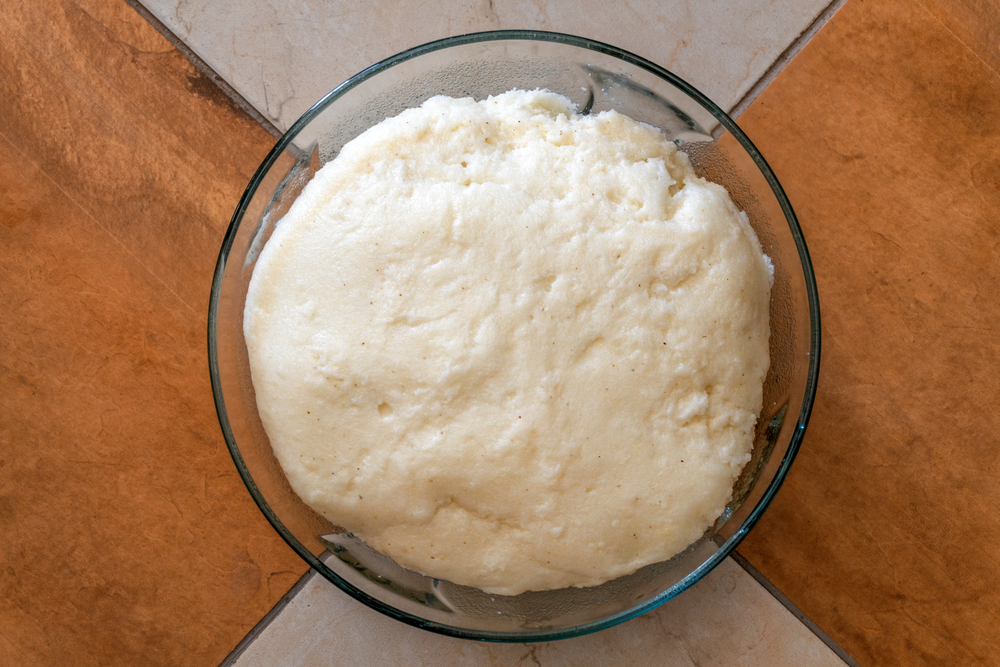
Traditional Preparation Methods
Ugali is made from a mixture of cornmeal (maize flour) and water, cooked to a thick, dough-like consistency. The process begins by heating water in a pot until it reaches boiling. Gradually, maize flour is added while continuously stirring to avoid lumps. The mixture is then cooked on low heat, with occasional stirring, until it thickens and forms a cohesive mass.
Serving and Eating Etiquette
In Tanzanian culture, Ugali is often served with various stews, curries, or sautéed vegetables. It is typically presented on a large communal platter or individual plates. To eat Ugali, locals use their right hand to tear off a small piece, roll it into a ball, and then dip it into the accompanying dish. The ball of Ugali is then used as a utensil to scoop up the other flavors. Eating with the right hand is customary in Tanzanian culture, as the left hand is considered unclean.
Nutritional Benefits
Ugali is a filling and satisfying meal that provides essential nutrients. Made primarily from maize flour, it is a good source of carbohydrates, providing energy for daily activities. Additionally, Ugali contains dietary fiber, which aids in digestion and promotes a healthy digestive system. While Ugali itself may be relatively plain, its accompaniments, such as vegetables and proteins, contribute to a well-rounded and nutritious meal.
Ugali’s popularity in Tanzania stems from its affordability, simplicity, and versatility. Whether enjoyed in a humble village home or a bustling city restaurant, Ugali is a dish that brings people together and represents the heart and soul of Tanzanian cuisine. So, be sure to try this beloved Tanzanian staple during your culinary journey through the country.
Zanzibari Cuisine: A Spice Odyssey
Zanzibar, the Spice Island, is renowned for its vibrant and aromatic cuisine. Influenced by a blend of African, Arab, Indian, and European flavors, Zanzibari cuisine offers a unique and tantalizing culinary experience. In this section, we will delve into the world of Zanzibari cuisine, exploring dishes like Biryani and Pilau, street foods like Zanzibar Pizza, and the fascinating history of the spice trade.
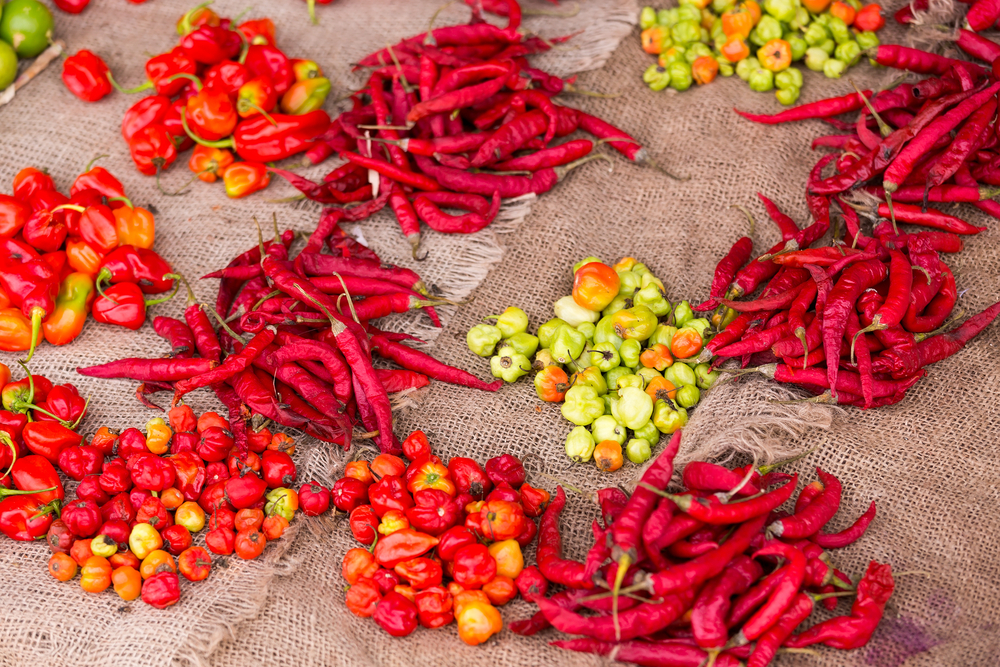
Biryani and Pilau Dishes
Zanzibar is famous for its flavorful Biryani and Pilau dishes. Biryani is a fragrant rice dish typically prepared with a mixture of spices, meat (such as chicken or beef), and sometimes vegetables. The rice is cooked with stock and spices, creating layers of aromatic flavors. Conversely, Pilau is a spiced rice dish often cooked with meat, onions, and various spices like cumin, cardamom, and cinnamon. Both Biryani and Pilau are beloved dishes in Zanzibar, offering a symphony of tastes and textures.
Zanzibar Pizza and Street Foods
When exploring the streets of Stone Town, the capital of Zanzibar, you’ll encounter an array of mouthwatering street food options. One popular choice is Zanzibar Pizza, a delicious and savory treat. It consists of a thin, crepe-like dough filled with a variety of ingredients, such as minced meat, vegetables, eggs, and cheese. The filled dough is then folded and fried, resulting in a crispy and flavorful snack.
In addition to Zanzibar Pizza, the island offers a range of street foods that reflect its diverse cultural influences. From freshly grilled seafood skewers to samosas and bhajias (spicy fritters), the streets of Zanzibar are a treasure trove of culinary delights.
The History of Spice Trade
Zanzibar’s nickname, the Spice Island, is a testament to its rich history in the spice trade. For centuries, the island has been a hub for cultivating and exporting various spices, including cloves, cinnamon, nutmeg, and cardamom. The spice trade brought wealth and prosperity to Zanzibar and left a lasting impact on its cuisine. The aromatic spices infuse Zanzibari dishes with distinct flavors and create a sensory experience like no other.
Visiting a spice farm in Zanzibar is a must-do for any food enthusiast. Here, you can witness the cultivation and harvesting of spices, learn about their culinary and medicinal uses, and even participate in spice-tasting sessions. It’s a fascinating journey through the flavors that have shaped Zanzibar’s cuisine and continue to captivate the senses of visitors.
In conclusion, Zanzibari cuisine is a delightful fusion of flavors influenced by a rich spice trade and cultural exchange history. From the tantalizing Biryani and Pilau dishes to the savory indulgence of Zanzibar Pizza, each bite takes you on a spice-filled odyssey. So, immerse yourself in the vibrant world of Zanzibari cuisine and savor the unique flavors that make this island a true culinary paradise.
Nyama Choma: Grilled Perfection
Nyama Choma, which translates to “roasted meat” in Swahili, is a beloved culinary tradition in Tanzania. This section will take you on a journey into the world of Nyama Choma, exploring the popular meats and marinades, the cultural significance of this dish, and the best places to experience Nyama Choma in Tanzania.
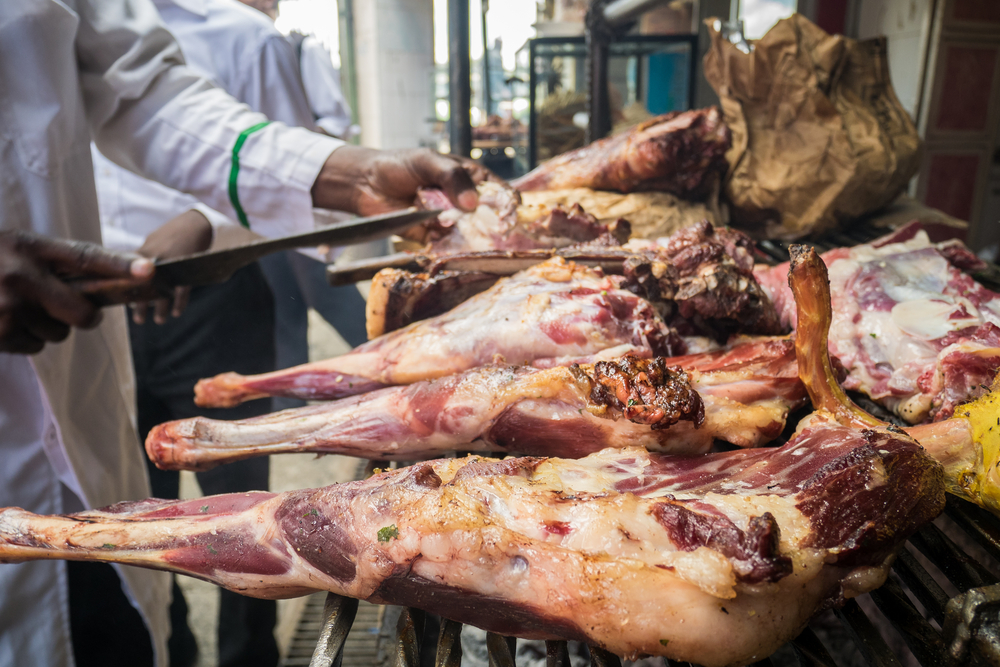
Popular Meats and Marinades
Nyama Choma is typically made using various types of meat, such as beef, goat, chicken, and sometimes even fish. Each meat has its unique flavor profile and cooking method. Beef and goat are popular choices for Nyama Choma, known for their succulent texture and rich taste. The meats are marinated with a blend of spices, herbs, and sometimes citrus juices, allowing the flavors to infuse and tenderize the meat. Common marinade ingredients include garlic, ginger, chili, coriander, and cumin.
Nyama Choma Culture and Social Significance
Nyama Choma is more than just a meal in Tanzania; it is a cultural institution and a social gathering experience. It is often enjoyed in groups, with friends and family coming together to share the joy of grilling and feasting on Nyama Choma. The process of grilling the meat is considered an art form, with skilled grill masters known as “Mama Lishe” or “Baba Lishe” taking pride in their craft. The aroma of sizzling meat fills the air, creating an atmosphere of celebration and camaraderie.
Best Places to Experience Nyama Choma
Tanzania offers a plethora of dining options to experience the best Nyama Choma. From local roadside joints to upscale restaurants, you’ll find a range of establishments dedicated to serving this grilled perfection. In cities like Dar es Salaam, Arusha, and Zanzibar, popular Nyama Choma spots have been satisfying taste buds for generations. These venues offer delicious grilled meats and a lively ambiance where you can soak up the local culture and enjoy the company of fellow food enthusiasts.
Whether you’re enjoying Nyama Choma in a bustling city or a rural village, the experience will surely be memorable. The combination of perfectly grilled meat, flavorful marinades, and the convivial atmosphere creates a dining experience that embodies the spirit of Tanzania.
In conclusion, Nyama Choma is a culinary delight that showcases Tanzania’s love for grilled meats. The combination of carefully selected meats, flavorful marinades, and the communal dining experience makes it a cherished tradition. So, if you’re in Tanzania, be sure to indulge in Nyama Choma and savor the mouthwatering flavors that will leave you craving for more.
Discover the recipe of Nama Choma, how to prepare it at home, and surprise your family and friends!
Tanzanian Sweets: A Sugary Adventure
Tanzanian cuisine is not only known for its savory delights but also for its delectable array of sweets. In this section, we will embark on a sugary adventure through the world of Tanzanian sweets, exploring treats like Maandazi, Kashata, Vitumbua, and more. Get ready to satisfy your sweet tooth and discover the delightful side of Tanzanian cuisine.
Maandazi: The Swahili Doughnut
Maandazi is a popular Tanzanian sweet treat that can be best described as a cross between a doughnut and a pastry. These deep-fried delights are made from a mixture of flour, sugar, yeast, and coconut milk, resulting in a fluffy and slightly sweet pastry. Maandazi can be enjoyed plain or dusted with powdered sugar, and they are often served with tea or enjoyed as a snack throughout the day.

Kashata: Coconut or Groundnut Delight
Kashata is a traditional Tanzanian sweet made from either grated coconut or groundnuts (peanuts). These bite-sized treats are prepared by cooking the grated coconut or groundnuts with sugar and a touch of spice, such as cardamom or cinnamon. The mixture is then shaped into small squares or balls and left to cool and harden. Kashata offers a delightful combination of crunchy texture, sweetness, and the natural flavors of coconut or groundnuts.
Vitumbua: Rice Pancake Pleasure
Vitumbua are small, round rice pancakes, a beloved sweet snack in Tanzania. The batter is made from a mixture of rice flour, coconut milk, yeast, sugar, and sometimes a hint of cardamom. The batter is poured into special round molds and cooked until golden brown. The result is a soft and slightly crispy pancake with a delicate sweetness. Vitumbua are often enjoyed with tea, especially during breakfast or as an afternoon treat.
Tanzanian sweets offer a delightful way to end a meal or satisfy a craving for something sweet. Whether you’re indulging in the fluffy Maandazi, the crunchy Kashata, or the delicate Vitumbua, each bite will transport you to a world of sugary bliss. So, don’t miss the opportunity to explore the sweet side of Tanzanian cuisine and treat your taste buds to these delightful confections.
Tanzanian Beverages: Traditional and Refreshing
Tanzania offers diverse traditional and refreshing beverages that perfectly complement its culinary delights. This section will explore some of the popular Tanzanian beverages, including Dawa, Chai ya Tangawizi, and Uji. Get ready to quench your thirst and discover the unique flavors that Tanzania has to offer.
Dawa: The Medicine Cocktail
Dawa, which means “medicine” in Swahili, is a popular Tanzanian cocktail known for its unique combination of flavors. It is made by muddling together sugar, lime wedges, and a generous amount of honey. The mixture is then topped with vodka and a splash of soda water. Dawa is traditionally served in a glass with a wooden muddler, allowing the drinker to stir and infuse the flavors together. This refreshing and slightly sweet cocktail is believed to have medicinal properties and is often enjoyed as a remedy for various ailments.
Chai ya Tangawizi: Ginger Tea
Chai ya Tangawizi, or ginger tea, is a soothing and invigorating beverage that is popular in Tanzania. This tea is made by boiling fresh ginger root with water and adding sugar or honey to taste. The result is a warm, comforting drink with a distinct ginger flavor and spicy kick. Chai ya Tangawizi is enjoyed for its delicious taste and potential health benefits, including aiding digestion and boosting the immune system.

Uji: The Millet Porridge Drink
Uji is a traditional Tanzanian beverage that can be best described as a millet porridge drink. Millet flour, water, and sugar are combined and cooked until the mixture thickens into a smooth and creamy consistency. Uji is typically enjoyed warm and is often served as a breakfast beverage. It is nourishing and provides a good source of energy to start the day. Uji can be flavored with spices like cardamom or cinnamon for added aroma and taste.
From the refreshing Dawa cocktail to the comforting Chai ya Tangawizi and the nourishing Uji, Tanzanian beverages offer a delightful respite and a chance to experience the local flavors. Whether you’re seeking a unique cocktail, a warming tea, or a hearty porridge drink, Tanzania has a beverage to suit every palate and occasion. So, raise your glass or cup and savor Tanzanian beverages’ traditional and refreshing flavors.
Mishkaki: Tanzanian Skewers
Mishkaki, a popular street food in Tanzania, is a mouthwatering delight that showcases the country’s love for grilled skewered meats. This section will explore the preparation and marinades used for Mishkaki, the vibrant street food culture surrounding it, and the perfect pairings and accompaniments that enhance its flavors.
Preparation and Marinades
Mishkaki typically consists of small pieces of meat, such as beef, chicken, or goat, threaded onto skewers. The meat is marinated in a flavorful mixture of spices, herbs, and sometimes yogurt to tenderize and infuse it with delicious flavors. Common marinade ingredients include garlic, ginger, chili, turmeric, paprika, and various aromatic spices. The skewers are then grilled over an open flame or charcoal, imparting a smoky and charred essence to the tender meat.
Street Food Culture and Variations
Mishkaki holds a special place in Tanzanian street food culture. You can find vendors grilling and selling these tantalizing skewers on bustling street corners, at local markets, and even at roadside stalls. The sizzling aroma of Mishkaki wafts through the air, enticing passersby to stop and indulge in this savory treat. Each vendor may have their unique twist on Mishkaki, offering variations in marinades, meat choices, and even accompaniments.
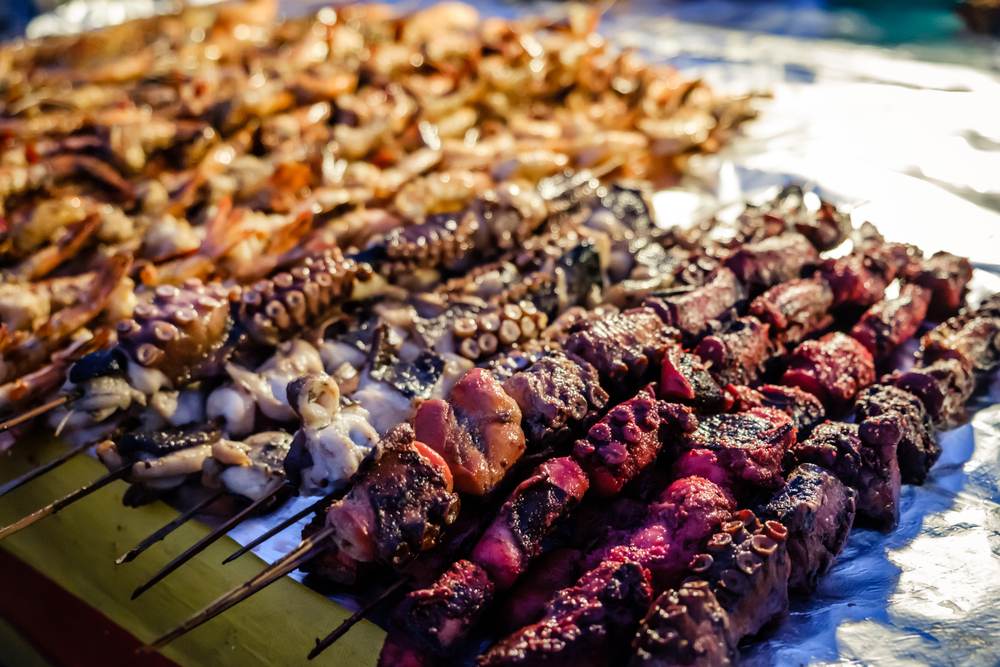
Pairings and Accompaniments
Mishkaki is often enjoyed on its own, but it can also be enhanced with various accompaniments and pairings. Popular options include a side of freshly baked bread, known as “mkate wa kumimina,” which is perfect for soaking up the flavorful juices. Mishkaki also pairs well with a refreshing salad, such as kachumbari, which is made from diced tomatoes, onions, and chili peppers. For an extra kick of flavor, a tangy and spicy dipping sauce, like pili pili, can be served alongside Mishkaki.
Mishkaki is not just a delicious food; it represents Tanzania’s vibrant street food culture and the joy of indulging in flavorsome grilled meats. So, whether you’re exploring the bustling streets of Dar es Salaam or venturing into the local markets of Arusha, be sure to indulge in the irresistible allure of Mishkaki and experience the mouthwatering skewers that have captivated the hearts and taste buds of locals and visitors alike.
Coastal Fish and Seafood Dishes
The coastal regions of Tanzania boast a rich abundance of seafood, making it a paradise for seafood lovers. This section will dive into the world of coastal fish and seafood dishes, exploring specialties like Samaki wa Kupaka, Octopus and Seafood Curries, and the fishing traditions and methods that contribute to the local culinary heritage.
Samaki wa Kupaka: Fish in Coconut Sauce
Samaki wa Kupaka is a delightful coastal dish that features fish cooked in a rich and flavorful coconut sauce. The fish, often a whole fish or fish fillets, is marinated with spices like turmeric, ginger, garlic, and chili before being simmered in a luscious sauce made from coconut milk, tomatoes, onions, and a blend of aromatic spices. The result is a dish that beautifully balances the sweetness of coconut with the tanginess of tomatoes and spices, creating a harmonious blend of flavors.
Octopus and Seafood Curries
The coastal regions of Tanzania are also known for their delectable seafood curries, with octopus being a popular choice. Octopus is tenderized and then cooked in a fragrant curry sauce made from a blend of spices, coconut milk, onions, and tomatoes. The curry infuses the octopus with rich flavors, resulting in a succulent and aromatic dish. Additionally, a variety of other seafood, such as prawns, crabs, and clams, are often used to create mouthwatering seafood curries that showcase the bounty of the Indian Ocean.

Fishing Traditions and Methods
The coastal communities of Tanzania have a deep-rooted connection with the ocean and fishing. Traditional fishing methods, such as using dhows (sailing vessels) and hand nets, are still practiced by local fishermen. These fishermen venture out into the waters, braving the waves and relying on their skills and knowledge to catch the freshest seafood. The catch is then brought back to shore, where it is transformed into delectable dishes that celebrate the coastal flavors and traditions.
Tanzanian coastal fish and seafood dishes offer a tantalizing glimpse into the bountiful resources of the Indian Ocean and the culinary heritage of the region. Whether you’re savoring the rich flavors of Samaki wa Kupaka or indulging in the aromatic seafood curries, each bite will transport you to the vibrant coastal regions and leave you craving for more. So, don’t miss the opportunity to experience the coastal culinary delights of Tanzania and immerse yourself in the flavors of the sea.
Tanzanian Vegetarian Delights
Tanzanian cuisine is a haven for meat lovers and offers a delightful array of vegetarian dishes. In this section, we will explore the vegetarian delights of Tanzania, including dishes like Mchicha, Maharage ya Nazi, and Bamia. These flavorful and satisfying vegetarian options showcase the diversity and creativity of Tanzanian cuisine.
Mchicha: Spinach and Peanut Curry
Mchicha, a popular Tanzanian dish, is a flavorful curry made with spinach and peanuts. The dish starts with sautéing onions and garlic in oil before adding chopped spinach and ground peanuts. A blend of spices, such as turmeric, cumin, and chili powder, is added to create a rich and aromatic curry. Mchicha is often served with rice or chapati, offering a nutritious and delicious vegetarian meal.
Maharage ya Nazi: Beans in Coconut Sauce
Maharage ya Nazi is a comforting and creamy dish made with beans cooked in a flavorful coconut sauce. The dish typically features red kidney beans, which are simmered in coconut milk along with a medley of spices, including ginger, garlic, and turmeric. The result is a luscious and hearty stew that can be enjoyed with rice, chapati, or even alongside other vegetarian dishes.
Bamia: Okra Stew
Bamia, or okra stew, is a popular vegetarian dish in Tanzania. Fresh okra pods are cooked with tomatoes, onions, garlic, and various spices to create a flavorful and satisfying stew. The okra pods release a natural thickening agent that gives the stew a slightly viscous texture. Bamia is often served with rice or ugali, a cornmeal porridge, offering a nutritious and wholesome meal option.
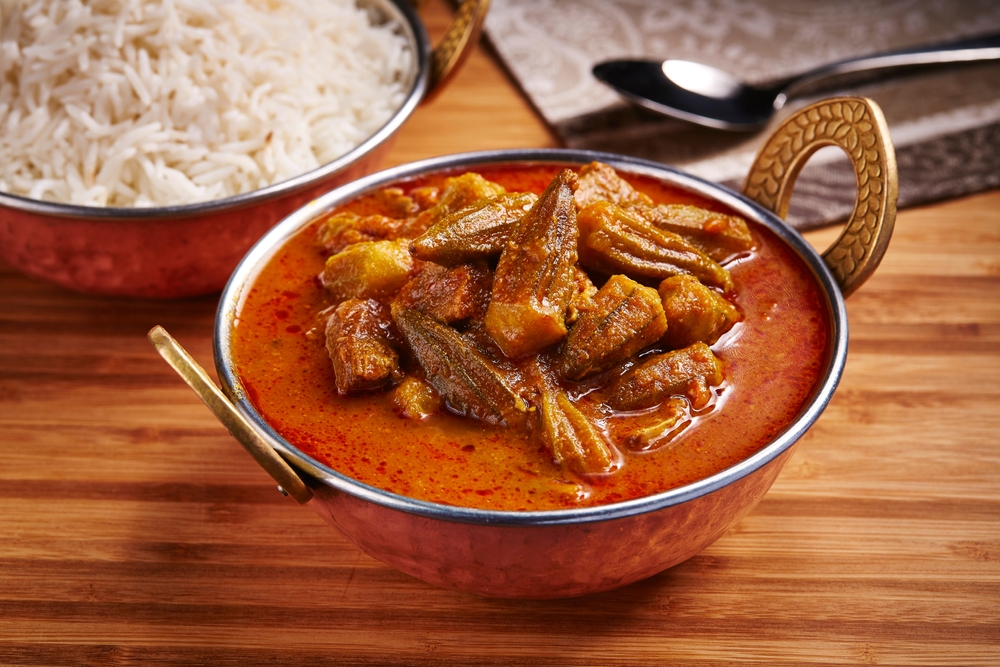
Tanzanian vegetarian delights showcase the country’s ability to create delicious and flavorful dishes without the use of meat. Whether you’re savoring the creamy Mchicha, the rich Maharage ya Nazi, or the hearty Bamia, these vegetarian options offer a tantalizing taste of Tanzania’s culinary diversity. So, don’t hesitate to explore the vegetarian side of Tanzanian cuisine and discover the delicious flavors that await you.
Conclusions
Exploring the culinary delights of Tanzania is a journey filled with diverse flavors, cultural significance, and mouthwatering experiences. From the staple dish of Ugali to the aromatic spices of Zanzibar, from the grilled perfection of Nyama Choma to the sweet indulgence of Tanzanian sweets, there is something to satisfy every palate.
Tanzania’s cuisine reflects the country’s rich cultural heritage, blending influences from Africa, Arab, Indian, and European traditions. The use of local ingredients, such as spices, fresh seafood, and tropical fruits, adds a unique and vibrant touch to the dishes.
Throughout this blog post, we have delved into the traditional preparation methods, the cultural significance, and the best places to experience the diverse culinary offerings of Tanzania. We have explored the streets of Zanzibar, the coastal regions with their seafood delights, and the vegetarian options that showcase the creativity of Tanzanian cuisine.
Whether you’re exploring the bustling markets of Dar es Salaam, immersing yourself in the history of the spice trade in Zanzibar, or venturing into the Serengeti plains, the culinary delights of Tanzania will be a highlight of your journey. The flavors and aromas will captivate your senses and leave you with unforgettable memories.
So, as you embark on your Tanzanian adventure, be sure to indulge in the tantalizing flavors, try the local specialties, and embrace the cultural diversity through its cuisine. Whether you’re a meat lover, a seafood enthusiast, a vegetarian, or have a sweet tooth, Tanzania has something to offer everyone.
Get ready to embark on a culinary odyssey through the Tanzanian delights, from the aromatic Zanzibar spices to the mouthwatering Nyama Choma, and create a gastronomic experience that will stay with you long after your journey ends.
